Get ready to redefine your ramen experience with this elevated homemade recipe that readers call: “Absolutely AMAZING,” “WOW! So good, and so easy,” and a “definite keeper.”
As an expert in creating bold, approachable dishes, I’ve crafted this recipe to rival restaurant-quality ramen BUT with shortcut broth and customizable ingredients. Say hello to a soul-warming bowl of ramen perfection full of expert flavorings, tips and tricks!
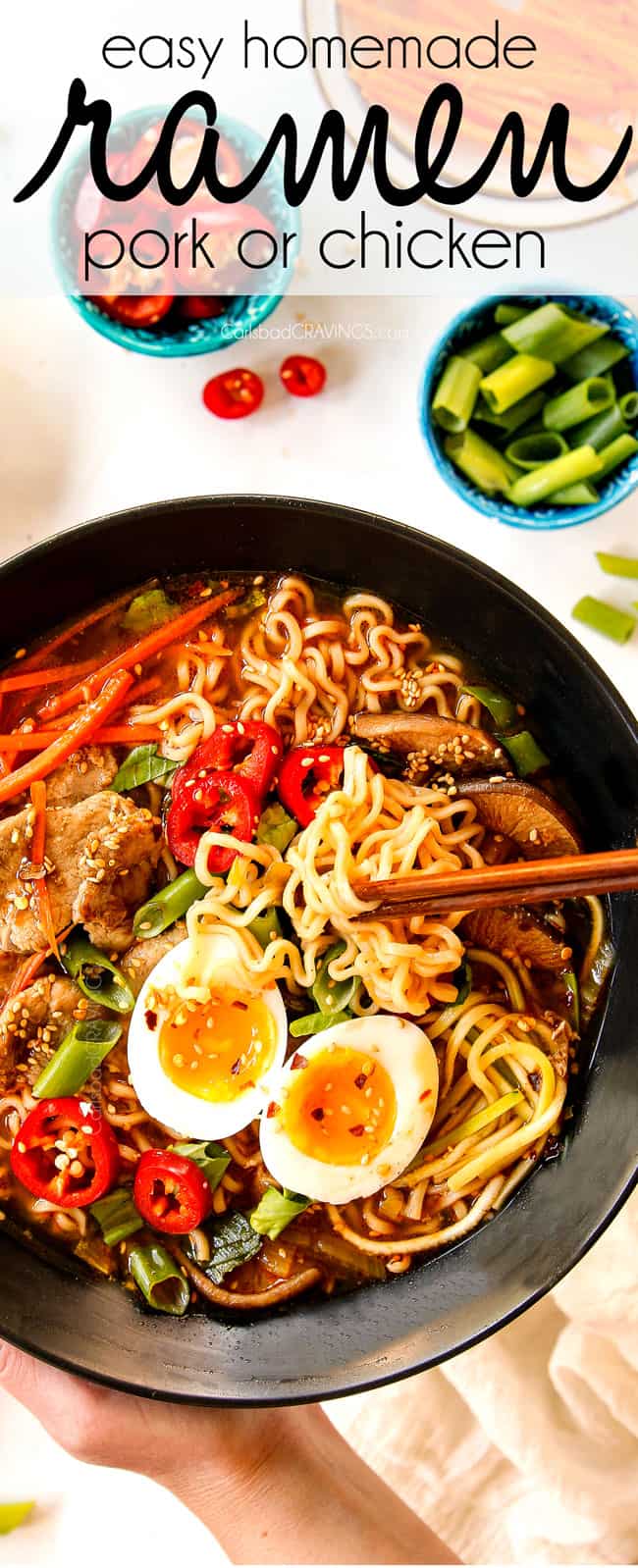
PIN THIS RECIPE TO SAVE FOR LATER
Homemade Ramen
Ramen Noodle houses are springing up everywhere and we are lucky enough to have a Harumama Noodles & Buns right in Carlsbad – even if there is always a wait. But the wait is well worth it because making authentic Ramen is an art. For example, making Tonkotsu Ramen requires a minimum of 8 hours of simmering the pork bones in water to create the complex broth – and that’s why authentic Ramen is that good.
For today’s Ramen recipe, however, I wanted to create a soup that would be quick and easy but still unabashedly flavorful; one that would satisfy your Ramen cravings during this crazy time and one that was easily adaptable with what you have on hand. The resulting Ramen recipe will satisfying your umami cravings every time!
For this winning recipe, we’ll be using the same dried ramen noodles you know and love, but ditching the sodium, msg-filled packet in exchange for our own fresh explosions of flavor. Our shortcut semi-homemade Ramen, will still have you enthusiastically slurping at home – guilt free.

Why you’ll love this Ramen Noodles Recipe
I’ve experimented with different cooking techniques, ingredients, ingredient ratios, etc., to bring you the best foolproof ramen recipe! Here’s why it’s the best:

WHAT IS RAMEN?
Ramen (ラーメン) is a noodle soup (no need to say “Ramen Soup” as that is implied) that originated in Japan by way of Chinese noodles. A bowl of ramen is known for its a rich, flavorful broth swaddling tender meat, noodles and veggies, all topped with a Ramen egg and often seaweed.
Authentic Ramen is always made with:
• ramen noodles
• a meat or fish-based broth that is simmered for hours
• tare, which is a simple sauce that adds saltiness to the soup

THE NOODLES:
To be considered Ramen, ramen noodles have to be used. But what exactly are ramen noodles? Ramen noodles are wheat-based alkaline noodles made with flour, wheat and most importantly kansui (かん水). This key ingredient is a salty, alkaline liquid that gives the noodles their signature chewy, springy texture.
There are many types of noodles that fit this criterion with varying shapes, colors, lengths, thicknesses, etc. – they don’t all look like the wavy dried packets we’re most familiar with. They can vary from thin and straight to thick and wavy, but the one thing they all have in common is kansui – which means they’ve earn the coveted classification as chewy ramen noodles.

THE BROTH & TARE:
Ramen broth is much like any meat broth that simmers water with bones and aromatics to make the base. What sets it apart from plain stock is the flavoring known as tare. Tare is a simple a mixture of intensely flavorful liquids or pastes that are added to the broth. The Ramen is named for the tare that is used. There are many different ‘tare’ but all of them are based on the three common flavorings – soy, salt and mirin – that are packed with umami in order to add flavor to the soup. The three most common types of ramen based on tare include:
• Shoyu (醤油, Soy Sauce) Ramen: the tare used to make Shoyu Ramen is soy sauce (shoyu) most often mixed with mirin. It is the type of Ramen I am sharing with you today as it is easily accessible, delicious and the most common. When a menu doesn’t specify the type of Ramen, it is usually Shoyu Ramen. It is typically made from chicken broth but contains other meats in the actual soup such as pork, beef, fish, etc.
• Shio (塩, Salt) Ramen: the tare used to make Shio Ramen is salt-based and one of the most delicate broths.
• Miso (味噌, Soybean Paste) Ramen: the tare used to make Miso Ramen is miso (soybean paste). It is one of my favorite ramens with its deeply umami, complex, rich broth.
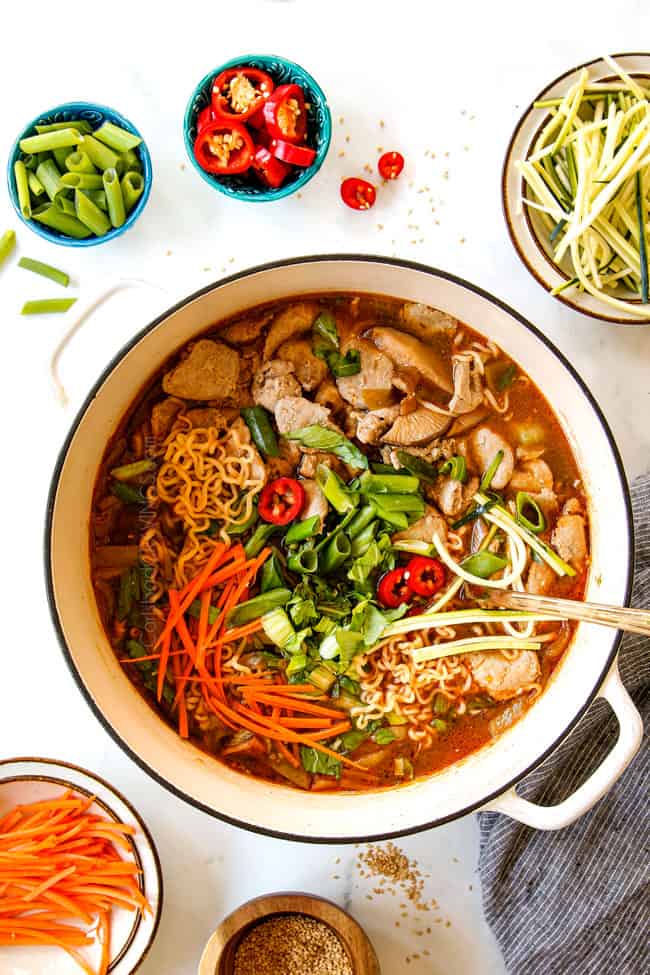

Good Ramen Recipe Ingredients
This Ramen broth is made with very simply ingredients. Equal parts soy sauce and Japanese rice wine or mirin are considered the tare which are further elevated by dynamic aromatics. You will need:
THE BROTH:

Where Can I Buy Rice Wine?
I use “Kikkoman Aji-Mirin: Sweet Cooking Rice Seasoning” which is commonly found in the Asian section of most grocery stores or you can Amazon it. It is not technically mirin but it works great. I highly suggest you google image before you head off to the grocery store so you know exactly what you are looking for or you can purchase it on Amazon.

What can I substitute for Rice Wine?
The best substitute for rice wine is pale dry sherry. If you’re looking for a non-alcoholic substitution, the best substitute is white grape juice mixed with some lemon juice.

WHERE CAN I BUY GOCHUJANG?
Gochujang is increasingly easy to find at your local grocery store or there is always Amazon (here). I use Annie Chun’s Gochujang Sauce. It is located in the Asian section of my grocery store. I do recommend looking to see what Annie Chun’s Gochujang Sauce looks like so you can easily spot it at the grocery store.
In addition to this Ramen recipe, I also use gochujang in my Korean Chicken, Korean Tacos, Korean Meatballs, Korean Spicy Noodles, Korean Beef Bulgogi and Korean Beef Bowls, so you will have plenty of scrumptious opportunities to use it up! It is also delicious on cooked veggies or any other place you use chili sauce.

THE ADD-INS
Let’s take a closer look at what you need to make this recipe (measurements in the printable recipe card at the bottom of the post):

Can I use chicken?
Absolutely! You can swap the pork tenderloin for one pound of chicken thighs. Sear the chicken thighs on each side just until golden, then add back to the soup with the broth. Simmer the chicken for 12-15 minutes or until tender enough to shred; shred then add to the soup along with the green parts of the bok choy.

Can I use ground pork?
Yes! Ground pork makes a tasty alternative to chicken and a less expensive option to pork tenderloin. Brown the pork in the soup pot, transfer to a plate with a slotted spoon, then use the drippings to sauté the aromatics.

Can I use dried arbomatics?
Yes! I totally understand if you don’t want to go to the grocery store or if you can’t get your hands-on fresh ingredients at this crazy time – or any time! You may substitute the fresh ingredients with powders – ground ginger, garlic powder and onion powder. The typical rule of thumb is 3:1, so one part dried to three parts fresh. I’ve included the exact amounts in the recipe notes.

Do I have to add mushrooms?
If you aren’t a mushroom fan, you can just skip them, although they do add dimension to the broth.

What can I use in place of bok choy?
I love bok choy because you get both the heartier, crunchier bottoms and the leafier green tops in one. That being said, you may substitute with spinach but you’ll be missing out on some of the fresh crunch.

Can I make vegetarian Ramen?
Yes! Swap the chicken broth for vegetable or mushroom stock and omit the pork.
THE NOODLES
As previously discussed, Ramen noodles are alkaline treated noodles which come in many varieties. Here’s just a snapshot of your options:
- Instant/dried ramen noodles: these are what many people think of when they hear “ramen.” They are super easy to find at your local grocery store. When using instant ramen noodles, discard the seasoning packet and only use the noodles. You can also find dried ramen in the Asian section of many grocery stores or at most Asian markets without the seasoning packet. I prefer NongShim Shin Ramyun ramen packets or Samyang ramen packets. They are thicker and heartier which means they stay nice and firm for longer.
- Fresh noodles: fresh noodles might not be the most convenient option during this lockdown but they are worth making a note of for later. Fresh noodles are more common in major cities where ramen noodle producers work nearby, but they can still be found in other areas. Fresh ramen will be located in the refrigerated section and should be used within a few days.
- Other options: If you don’t have access to Ramen noodles, you can make this soup with other Asian noodles – it just won’t technically be “Ramen”😉. Other options include rice vermicelli, soba, udon or somen. These noodles are usually sold dried. Cook according to package directions before adding to the soup.

Helpful tools
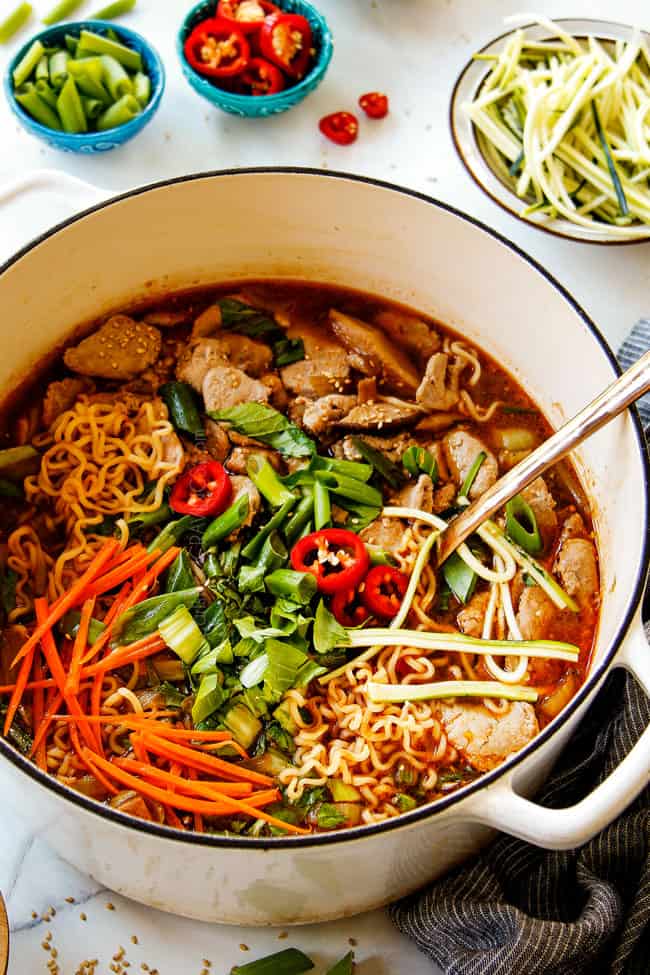

HOW TO MAKE RAMEN
There are two parts to making this Ramen recipe: 1) The Prep and 2) The Cooking. The cooking just takes minutes, so it is important all of the prep is done ahead of time, which includes marinating the pork while you prep the toppings.
THE PREP:
soy sauce: the salt in the soy sauce helps break down the proteins for a more tender texture.
- cornstarch: acts as a binder and helps the soy sauce and sesame oil cling to the meat and protects the pork from overcooking.
- sesame oil: adds flavor and helps deliver the soy sauce to the inner channels of the protein. Let the pork marinate at room temperature while you prep the rest of the ingredients.
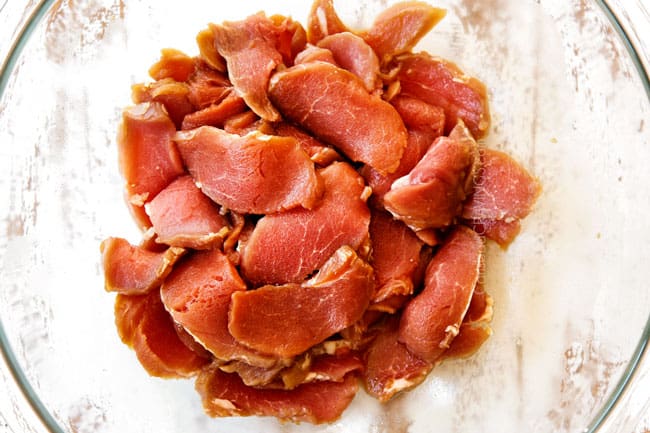
Step 2- Make Eggs. I consider eggs a quintessential element of Ramen, but they are optional. To make, fill a medium saucepan with water (just enough to cover eggs) and bring to a boil. Gently lower the eggs into the water and adjust the heat to maintain a gentle simmer. Cook for 6-7 minutes for soft-boiled or 9-10 minutes for medium-boiled. Remove the eggs to an ice bath until ready to use, then peel and slice in half.
Step 3 – Prep Toppings. While the eggs are simmering, use a mandolin or the large holes on a box grater to coarsely grate the carrots and zucchini; set aside. Prepare/chop all remaining ingredients.
THE COOKING
Step 4 – Cook pork. Heat 2 tablespoons oil in a large Dutch oven or soup pot over medium-high heat. Once hot, add pork, breaking up any clumps and let cook without stirring until pork begins to brown, about 1 minute. Stir the pork and continue to cook until cooked through, about 1 minute. Transfer pork to a plate and set aside; don’t drain pot.
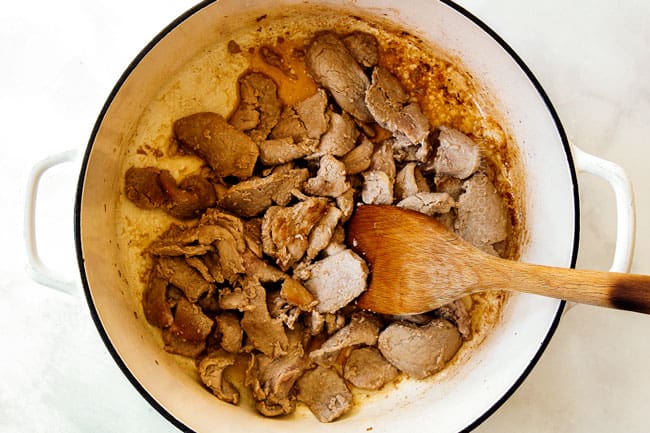
Step 5 – Sauté Aromatics. Add one additional tablespoon oil to the pot and heat over medium-high heat. Add the mushrooms and scallion WHITES and cook until lightly browned and softened, 3-4 minutes. Add ginger and garlic and sauté for 1 minute.
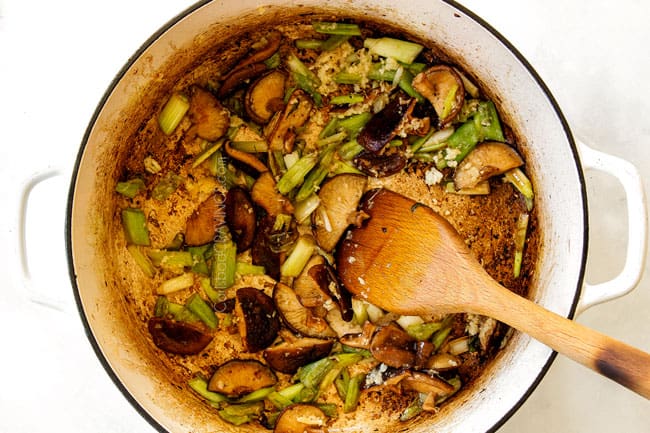
Step 6 – Simmer Soup. Add soy sauce, rice wine, oyster sauce, chili paste, and bok choy WHITE PARTS ONLY. Bring soup to a simmer and simmer for 5 minutes.
Step 7 – Cook Ramen. Meanwhile, cook Ramen separately according to package directions, taking care not to overcook. Drain and rinse in cool water to stop cooking.
Step 8 – Combine. Add pork back to soup along with bok choy GREENS, scallion GREENS and cook until bok choy is wilted, about 1 minute.
Step 9 – Toppings! Divide soup between bowls and top with eggs, carrot, zucchini and any other desired toppings. Serve with sesame seeds and additional sesame oil and/or chili paste if desired.
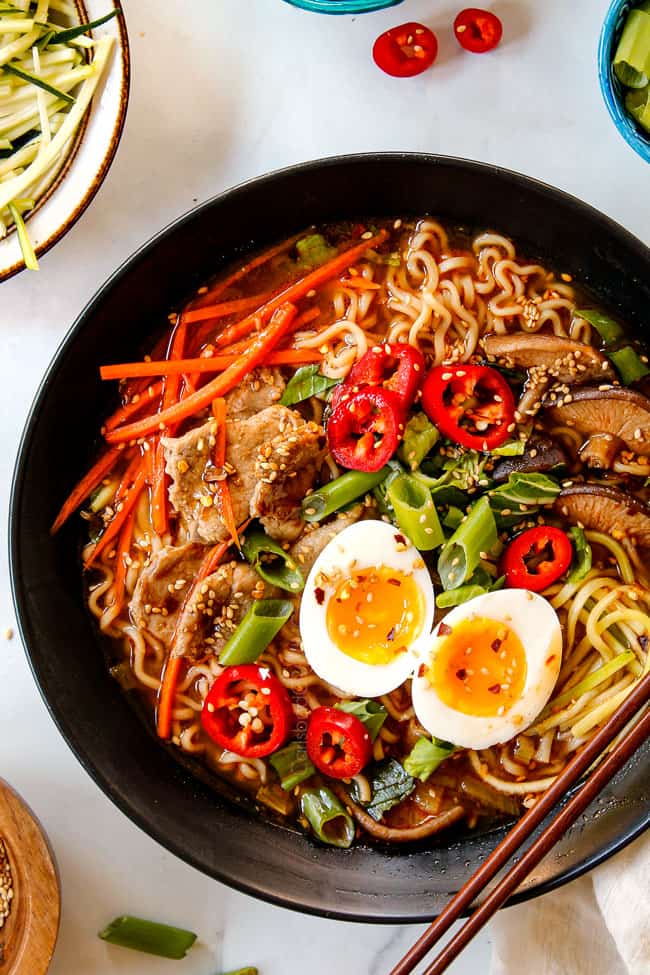

Homemade Ramen tips and tricks

Good Ramen Recipe make ahead tips
Ramen Soup is best served fresh so I don’t recommend assembling the entire soup ahead of time but you can prep the ingredients in advance so it can come together quickly.
• Pork: can be marinated and cooked in advance. Refrigerate for up to 3 days or freeze for later.
• Vegetables and Aromatics: chop the mushrooms, grate the ginger, mince the garlic, chop the green onions, chop the bok choy, slice the carrots and zucchini. Group in separate airtight containers according to when the ingredients are added to the soup.
• Broth: alternatively, you can partially make the broth up to five days in advance and store into an airtight container in the refrigerator – hold the pork, bok choy and green part of the onions and add when reheating.
• Eggs: can be boiled and refrigerated for up to 3 days ahead of time.
• Noodles: cook the ramen noodles in boiling water until al dente, drain and toss in a bit of sesame oil to prevent them from sticking together. When ready to serve, don’ warm first; just make sure the broth is boiling hot before you pour it over the noodles in individual bowls.

Can I make Ramen gluten free?
To make this Ramen recipe gluten free, use tamari instead of soy sauce. Use gluten free Ramen noodles such as Lotus Foods Organic Brown Rice Ramen. I haven’t personally tried these noodles, but I’ve heard they are excellent. If you can’t locate gluten free Ramen, then try rice vermicelli. Rice vermicelli is usually gluten free, but not always, so just make sure you check the ingredients for wheat starch or wheat flour.
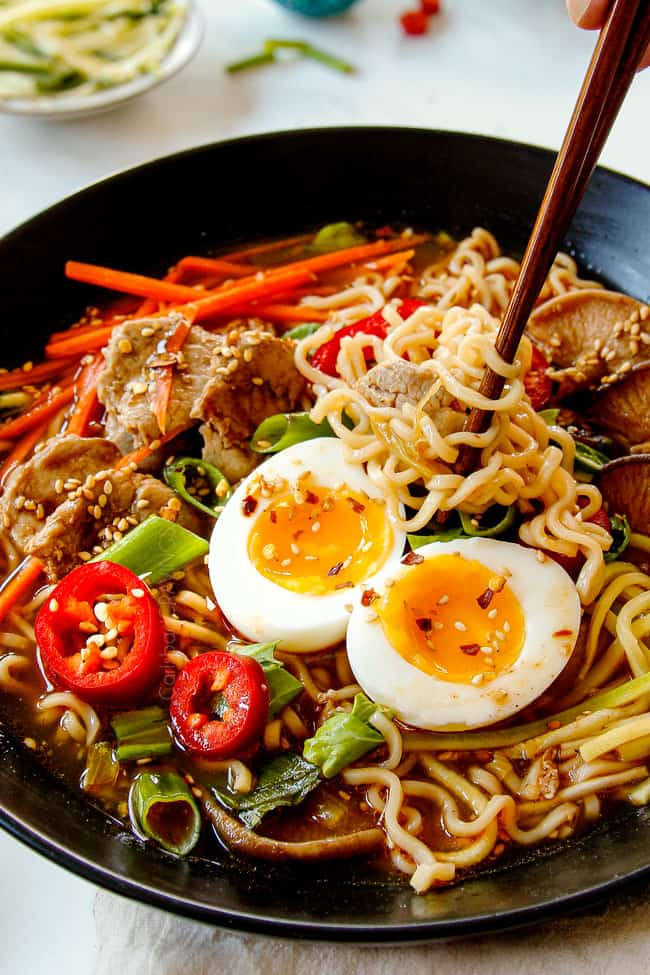

How to serve this Ramen Noodles Recipe
Ramen is easily a meal-in-one full of protein and veggies, but you can also serve it with a fresh, crunchy salad such as Crunchy
Asian Salad, Chinese Salad, or Asian Pineapple Salad.
You can also transform this Ramen recipe into a feast by serving it with appetizers! We love it with any of the following Asian appetizers (yes, they aren’t all Japanese):

What toppings for Ramen?
Ramen can be super simple or you can go crazy with all sorts of fancy toppings. Since we focused on making this best Ramen recipe possible with pork, mushrooms, bok choy, and green onions (negi) in the broth, I chose to keep the toppings simple with thinly sliced carrots, zucchini and a soft-boiled egg.
But the beauty of making your own Ramen is you can do whatever you want! I’ve included some optional toppings below that are commonly served with ramen – some of the names might sound exotic because they are Japanese but most of the toppings themselves are familiar:

How to store Homemade Ramen
Store the soup/broth separately from the noodles. Drizzle the Ramen noodles with sesame oil, toss to coat, then store in an airtight container. Soup should be stored in an airtight container in the refrigerator for up to 3 days. Store any topping in separate airtight containers.

CAN YOU REHEAT RAMEN?
Yes! You can reheat Ramen, but only reheat the broth and not the noodles. Take care to reheat the broth until boiling hot and then pour over the cold noodles; the noodles will warm right up once enveloped in piping hot broth.
• Stove: bring soup to a boil, stirring occasionally until heated through. Pour over Ramen noodles in individual bowls. Top with desired toppings.
• Microwave: transfer individual servings to a microwave-safe bowl and microwave for 60 seconds, stir, then warm at 35-second intervals, as needed, until piping hot. Pour over Ramen noodles in individual bowls. Top with desired toppings.
CAN I FREEZE RAMEN SOUP?
I don’t recommend freezing Ramen Noodles,
but you may freeze the broth without the bok choy or mushrooms in a freezer
safe container or individual serving-size containers for up to three
months.
Ramen Noodles Recipe FAQs
Ramen is very low in calories and with a nice boost of protein. If you want to add more nutrients, use brown rice ramen and add additional vegetables. Here are some health perks of Ramen:
Pork tenderloin is certified by the American Heart Association’s as an extra-lean, heart-healthy protein. A 3-ounce portion of pork tenderloin, for example, contains less than 3 grams of fat and 120 calories. Pork tenderloin also is also an excellent source of thiamin, vitamin B6, phosphorous and niacin.
Shiitake mushrooms boast the most fiber of all mushroom varieties (at 2g per serving), are a good source of riboflavin, niacin, vitamin B6, potassium, and are one of the richest vegetable sources of selenium, which may protect against cancer and heart disease. Research suggests that eating shiitake mushrooms daily lowers inflammatory markers and improves immune system function.
Chicken broth has long been rumored to help with the common cold but there is actual science behind it! Chicken broth prevents the movement of white blood cells or neutrophils that are responsible for inflammation – symptoms which include congestion, mucus build-up and coughing.
Technically, yes you can cook the ramen noodles directly in the broth but I don’t recommend it. I know it it’s tempting to cook them with the soup, and I am all about eliminating steps, but I promise cooking the noodles separately makes a world of difference.
If you cook the ramen noodles directly in the soup, the starches release into the stock which dilute the flavor and make it heavier. You also consume this extra starch unnecessarily.
More importantly, however, the noodles suck up a ton of liquid and don’t stop until they’re consumed. This results in water-logged, gummy noodles and a soup with hardly any broth.
Instead, it is best to cook the ramen noodles separately just until al dente, then divide the desired number of noodles among individual bowls, then pour the soup over them. This promotes the ideal texture and bonus, everyone can choose the quantity of noodles.
Although we all think Japan when we hear Ramen, ramen noodles are actually a Chinese invention that flourished in Japan. In the 1930s, Ramen gained extreme popularity as Chinese immigrants to Japan began cooking in soba shops. They began blending their noodles with Japanese broths and ramen shops and noodle carts multiplied.
Post-World War II, many Japanese noodle makers left the country and ramen was introduced to America. Ramen was further popularized in the 70’s as instant ramen such as Oodles of Noodles, Cup of Ramen, was marketed as healthy food to busy families. Today, ramen is too often known for its dried mass-produced packets instead of authentic, slurp-worthy ramen but ramen shops have gained momentum the last few years with no sign of stopping.
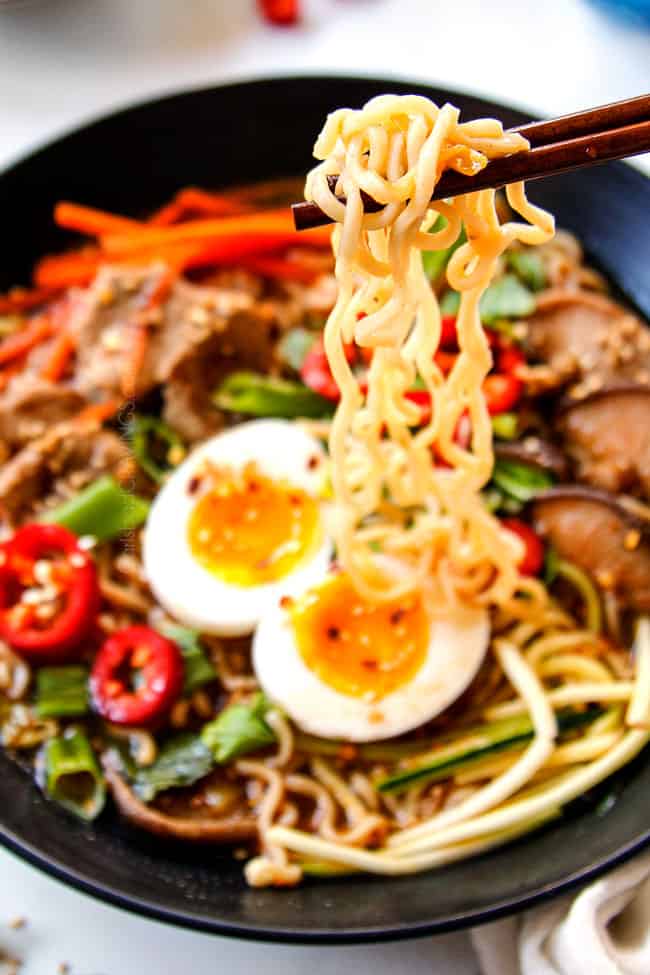
WANT TO TRY THIS RECIPE?
PIN IT to your recipe BOARD TO SAVE FOR LATER!
FIND ME ON PINTEREST FOR MORE GREAT RECIPES! I AM ALWAYS PINNING :)!
©Carlsbad Cravings by CarlsbadCravings.com
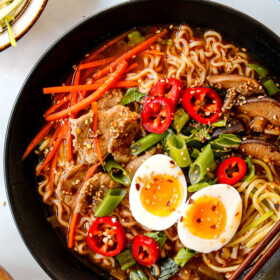
Easy Ramen
Save This Recipe To Your Recipe Box
You can now create an account on our site and save your favorite recipes all in one place!
Ingredients
PORK
- 1 pound pork tenderloin, sliced thinly (about 1 medium tenderloin)
- 2 tablespoon low sodium soy sauce
- 1 teaspoon cornstarch
- 1 teaspoon toasted sesame oil
SOUP
- 3 tablespoons vegetable or other neutral oil divided
- 4 green onions, white and green parts separated, both parts sliced on the bias into 1-inch lengths*
- 4-6 garlic cloves minced
- 1 tablespoon freshly grated ginger
- 8 oz. shitake mushrooms wiped clean, stemmed and sliced (optional)
- 8 cups reduced sodium chicken broth
- 2 tablespoons low sodium soy sauce
- 1 tablespoon oyster sauce (may sub soy sauce)
- 2 tablespoons Japanese rice wine
- 1-2 tablespoons Gochujang (Korean chili paste) use less if using Asian chili paste
- 3 baby bok choy white parts thinly sliced on the diagonal; green leaves coarsely chopped
- 2 packages instant ramen noodles only!
FOR SERVING
- 6 eggs
- 2 medium carrots
- 1 medium zucchini
- toasted sesame seeds
- toasted sesame oil
Instructions
PREP – Pork & Toppings
- Whisk 2 tablespoons soy sauce, 1 teaspoon cornstarch and 1 teaspoon sesame oil together in a large bowl or freezer bag. Add sliced pork and toss to evenly coat; set aside.
- Fill a medium saucepan with water (just enough to cover eggs) and bring to a boil. Gently lower the eggs into the water and adjust the heat to maintain a gentle simmer. Cook for 6-7 minutes for soft-boiled or 9-10 minutes for medium-boiled. Remove the eggs to an ice bath until ready to use, then peel and slice in half.
- While the eggs are simmering, use a mandolin or the large holes on a box grater to coarsely grate the carrots and zucchini; set aside. Prepare/chop all remaining ingredients.
MAKE SOUP
- Heat 2 tablespoons oil in a large Dutch oven or soup pot over medium-high heat. Once hot, add pork, breaking up any clumps and let cook without stirring until pork begins to brown, about 1 minute. Stir the pork and continue to cook until cooked through, about 1 minute. Transfer pork to a plate and set aside; don’t drain pot.
- Add one additional tablespoon oil to the pot and heat over medium-high heat. Add the mushrooms and green onion WHITES and cook until lightly browned and softened, 3-4 minutes. Add ginger and garlic and sauté for 1 minute.
- Add chicken broth, soy sauce, oyster sauce, rice wine, chili paste, and bok choy WHITE PARTS ONLY. Bring soup to a simmer and simmer for 5 minutes.
- Meanwhile, cook ramen separately according to package directions. Drain, rinse in cold water, then toss with a drizzle of sesame oil.
- Add pork back to soup along with bok choy GREENS, green onion GREENS and cook until bok choy is wilted, about 1 minute.
- Divide ramen between bowls and top with broth, eggs, carrots, and zucchini. Serve with sesame seeds and additional sesame oil and/or chili paste if desired.
Notes
PANTRY FRIENDLY RAMEN
You can keep this Ramen recipe extremely simple and pantry friendly by replacing the fresh aromatics with powders and only adding Ramen noodles if you like. To use all powders, you’ll need:- 1 ½ teaspoons garlic powder
- 1 teaspoon onion powder
- 1 teaspoon ground ginger
TIPS AND TRICKS
- Make it vegetarian: omit the pork and swap the chicken broth for mushroom or vegetable stock. If you are vegan, omit the classic soft-boiled egg.
- Make it gluten free: use tamari instead of soy sauce. Use gluten free Ramen noodles such as Lotus Foods Organic Brown Rice Ramen.
- Shiitake Mushrooms: you may substittute cremini/baby bella although shiitake are more flavorful.
- Rice wine: I use “Kikkoman Aji-Mirin: Sweet Cooking Rice Seasoning” which is commonly found in the Asian section of most grocery stores or you can Amazon it. I highly suggest you google image before you head off to the grocery store so you know exactly what you are looking for. Do NOT substitute with rice vinegar -it is not the same.
- Rice wine substitute: the best substitute for rice wine is pale dry sherry. If you’re looking for a non-alcoholic substitution, the best substitute is white grape juice mixed with some lemon juice.
- Gochujang: is increasingly easy to find at your local grocery store or there is always Amazon (here). I use Annie Chun’s Gochujang Sauce. It is located in the Asian section of my grocery store or you can use your favorite chili paste.
- Use less chili paste: if you use sriracha or another Asian chili paste rather than Gochujang, take care you add less because they are spicier than Gochujang.
- Chicken substitute: you can swap the pork tenderloin for one pound of chicken thighs. Sear the chicken thighs on each side just until golden, then add back to the soup with the broth. Simmer the chicken for 12-15 minutes or until tender enough to shred; shred then add to the soup along with the green parts of the bok choy. You can also use rotisserie chicken and add at the end to warm through.
- Ground pork substitute: brown the pork in the soup pot, transfer to a plate with a slotted spoon, then use the drippings to sauté the aromatics.
- Freeze pork: it is much easier to slice pork (or any protein) if it is partially frozen. Place it in the freezer for about 30 minutes prior to slicing.
- Marinate pork: this might seem like one extra step but is definitely worth it. It tenderizes the pork, protects it from overcooking and infuse it with flavor.
- Cook ramen separately! This seemingly extra step prevents the noodles from overcooking, becoming gummy or soaking up too much broth, especially in leftovers.
- Customize toppings: use whatever you have on hand but I recommend something crunchy (zucchini, carrots), so something creamy (soft boiled egg) and something spicy (favorite chili sauce).
- Discard packets. Use only the ramen noodles and discard any flavor packets that accompany the noodles.
PREP AHEAD
Ramen Soup is best served fresh so I don’t recommend assembling the entire soup ahead of time but you can prep the ingredients in advance so it can come together quickly.- Pork: can be marinated and cooked in advance. Refrigerate for up to 3 days or freeze for later.
- Vegetables and Aromatics: chop the mushrooms, grate the ginger, mince the garlic, chop the green onions, chop the bok choy, slice the carrots and zucchini. Group in separate airtight containers according to when the ingredients are added to the soup.
- Broth: alternatively, you can partially make the broth up to five days in advance and store into an airtight container in the refrigerator – hold the pork, bok choy and green part of the onions and add when reheating.
- Eggs: can be boiled and refrigerated for up to 3 days ahead of time.
- Noodles: cook the ramen noodles in boiling water until al dente, drain and toss in a bit of sesame oil to prevent them from sticking together. When ready to serve, don’ warm first; just make sure the broth is boiling hot before you pour it over the noodles in individual bowls.
STORAGE
Store the broth, noodles and toppings separately. Drizzle the Ramen noodles with sesame oil, toss to coat, then store in an airtight container. Soup should be stored in an airtight container in the refrigerator for up to 3 days.HOW TO REHEAT
You can reheat Ramen, but only reheat the broth and not the noodles. Take care to reheat the broth until boiling hot and then pour over the cold noodles; the noodles will warm right up once enveloped in piping hot broth.- Stove: bring soup to a boil, stirring occasionally until heated through. Pour over Ramen noodles in individual bowls. Top with desired toppings.
- Microwave: transfer individual servings to a microwave-safe bowl and microwave for 60 seconds, stir, then warm at 35-second intervals, as needed, until piping hot. Pour over Ramen noodles in individual bowls. Top with desired toppings.

Did You Make This Recipe?
Tag @CarlsbadCravings and Use #CarlsbadCravngs
Leave a Review, I Always Love Hearing From You!
Carlsbad Cravings© Original

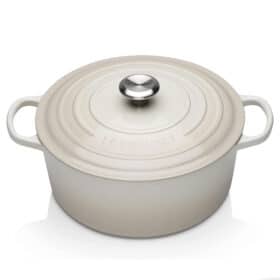
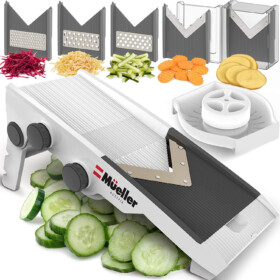
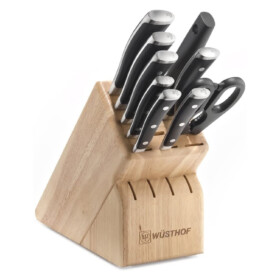

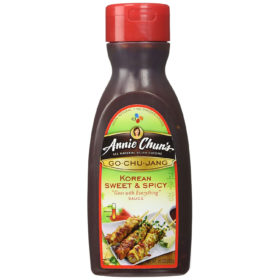
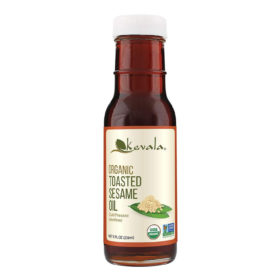
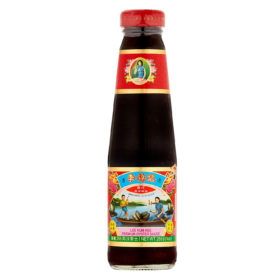









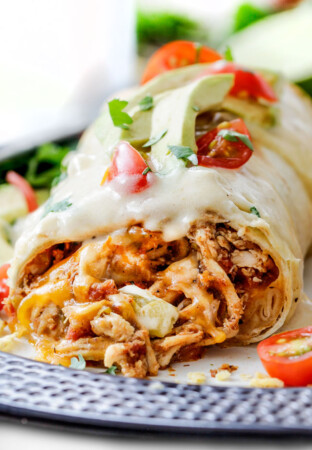









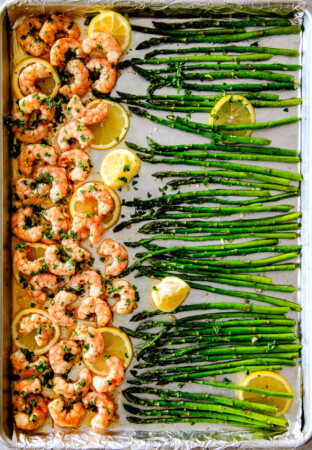

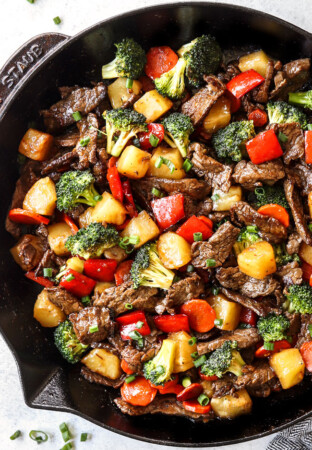

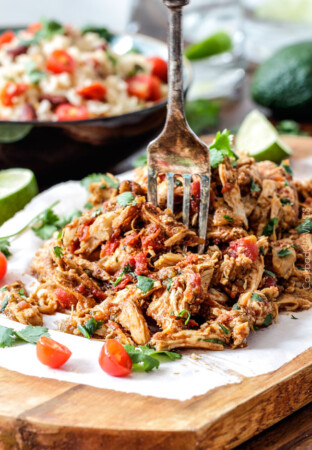
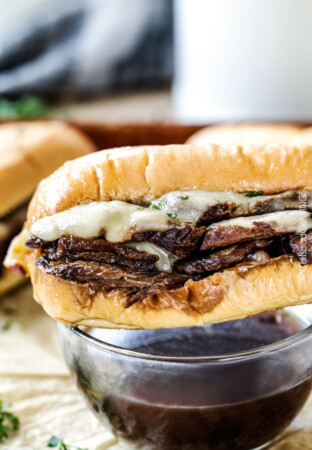
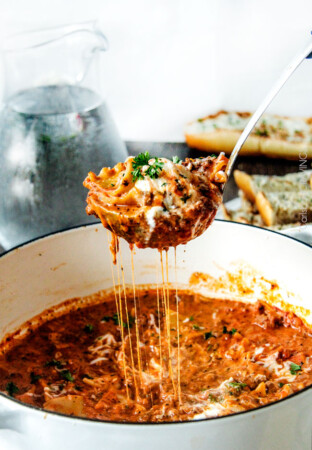

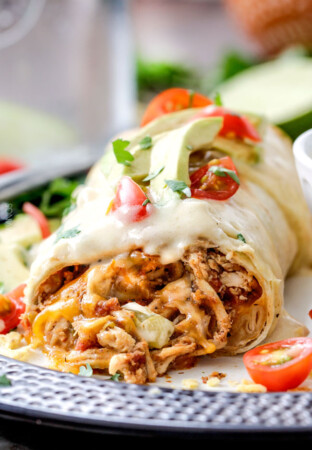
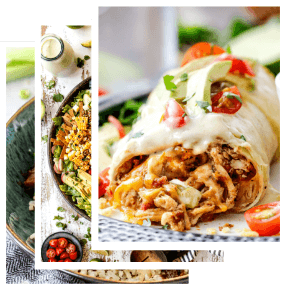
Nikalette says
This was absolutely AMAZING!!!!!! I have not had a real legit ramen before and have been wanting to try one for so long but didn’t have a clue where to start. This recipe popped up a couple days ago on my Pinterest and I just HAD to give it a whirl 1. Because it looked so dang good and 2. Because literally EVERYTHING I have made from you has always came out SOOOOOO good. The only things I did different was add more garlic and did the eggs in my instant pot. There were so many different levels of flavor! Definitely a keeper, thank you!!!
Jen says
Thank you Nikalette for being the first to try/comment on this new ramen recipe and make my day! I’m thrilled you loved it so much! Thank you also for your kind words, I love hearing you’re enjoying my recipes! xo
Carla says
Oh Jen,
Let me tell you. I made ramen before with the recipe of a fancy Spanish chef. Nobody liked it.
But I made yours and oh my goodness!!!!!!!!!!!. It is absolutely amazing. I used pork butt, because that is all I had. But it came out soooo tender and delicious. I am going to make the pork alone as a dish, maybe with some bok choy, and other veggies.
I did not have Mirin, I used Moscato instead, oops, but it worked! Added some extra sriracha for extra heat.
Thank you for sharing such a delicious dish!!!!
Every one of your recipes is so good!
Jen says
Yesss! I’m so happy this Ramen recipe was such a hit Carla, thank you! I’m so pleased you’re enjoying my recipes!
Salesha says
This turned out amazing!! Thank you for the great recipe!
Jen says
You’re so welcome, I’m so pleased you loved it! Thanks for taking the time to comment!
Liza Smith says
Hi Jen,
We are big fans of yours and have tried and loved MANY of your recipes! We’re going to mess around with a chicken version of this recipe and are wondering what the gorgeous red peppers in the picture are. They don’t seem to be in the recipe, and we like spicy peppers, so we’re wondering.
Jen says
Thanks so much Liz, I love hearing you’re enjoying my recipes! They are red fresno peppers. Good luck!
Lisa S. says
We had been dying to make a good homemade ramen and this recipe did not disappoint. WOW! So good and will be in our rotation of regular dishes.
Jen says
Thanks so much Lisa, I’m so pleased this recipe is a new family favorite!
Ewa French says
This soup was delicious. I substituted chicken because that’s what I had on hand. So good, easy, will make again.
Jen says
Thanks so much Ewa, I’m so pleased you enjoyed it!
Shannon C says
Hi. If we were wanting to make Miso Ramen, would I swap the soy for White Miso paste or add White Miso paste (and potentially reduce the soy sauce)? My daughter just had her first Miso Ramen last night in Liberty Station before we flew home to Boston and in our little suburb there aren’t any ramen options. Thank you!
Jen says
Hi Shannon! How exciting that you’re making your own Miso Ramen! I would reduce the soy sauce to about 1 tablespoon with a 1/4 cup of white miso paste dissolved in some of the hot broth from the recipe. Hope you love it!